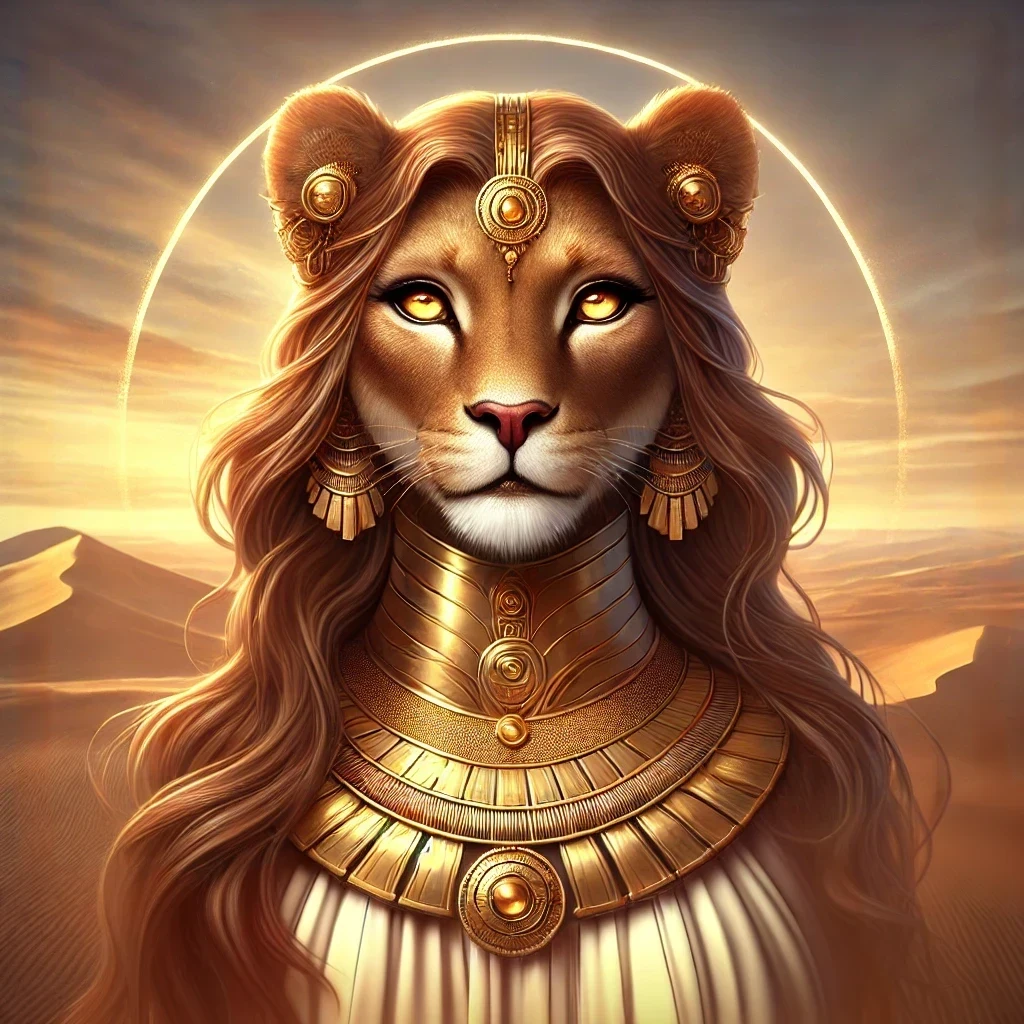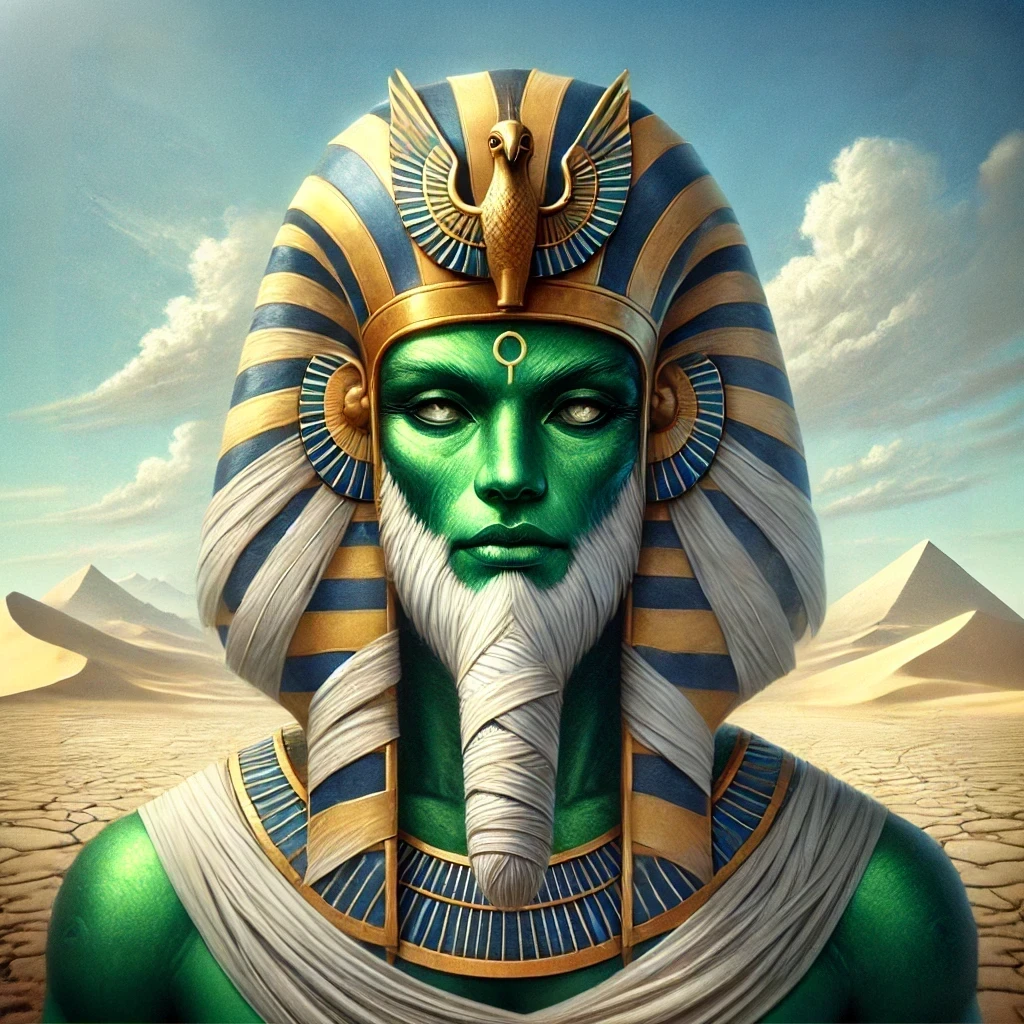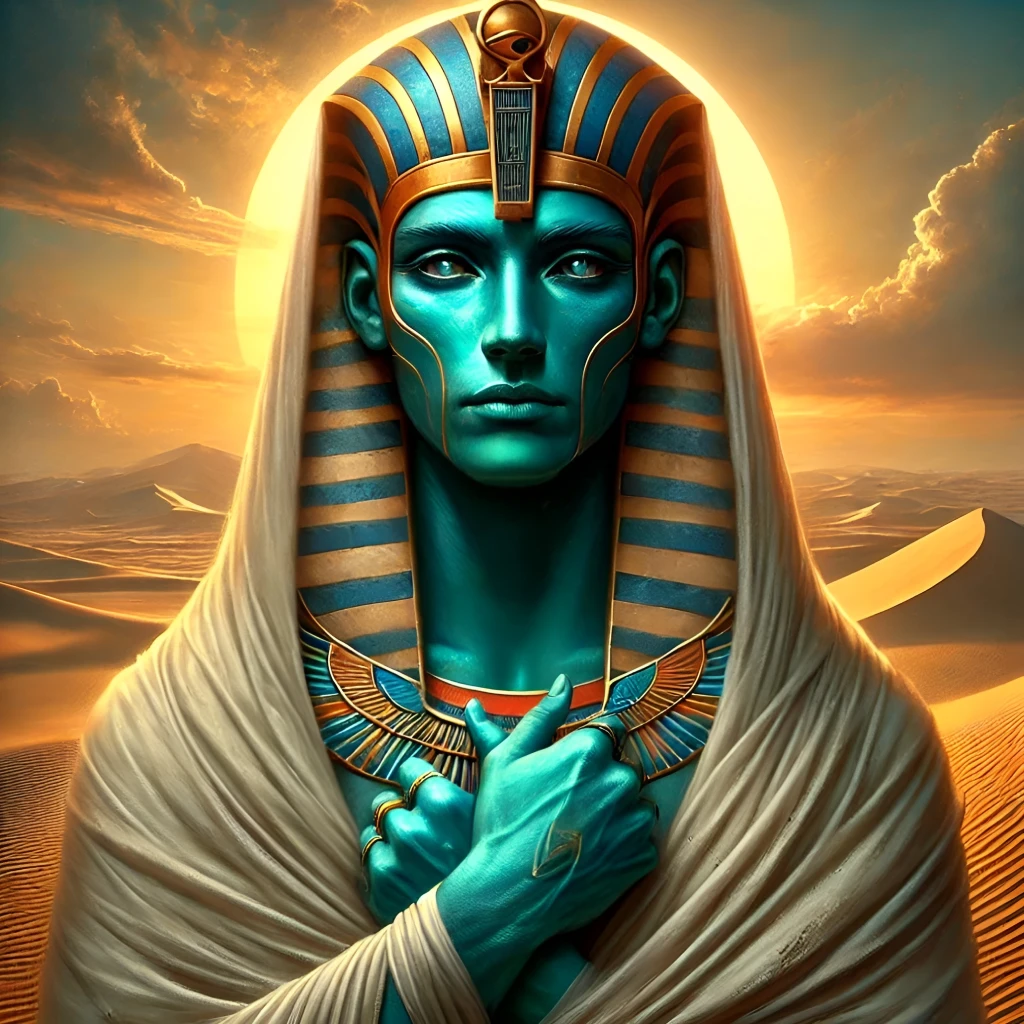The ancient Egyptian pantheon is a rich tapestry of deities, each with unique attributes, domains, and stories. Among these figures is a lesser-known but fascinating goddess, often depicted as a fierce lioness or a woman with the head of a lioness. Her name, Pakhet, translates to “she who scratches” or “the tearer,” reflecting her association with hunting, warfare, and protection. Known by epithets such as “Night Huntress” and “She Who Opens the Ways of the Storm,” this deity embodies the duality of nurturing and destructive forces. Revered primarily in Middle Egypt, her influence extended beyond her regional cult centers, leaving an indelible mark on Egyptian religion and culture.
Origins
Early Mentions and Development
The origins of this lioness goddess can be traced to the Middle Kingdom period (c. 2055–1650 BCE), a time when regional deities gained prominence alongside the state gods. Pakhet’s cult center was located near Beni Hasan in Middle Egypt, where the rugged desert landscape and the proximity to the Nile Valley shaped her identity. The region’s inhabitants, who relied on hunting and the protection of their lands, likely venerated her as a guardian and provider.
Syncretism with Other Deities
Over time, her identity became intertwined with other feline goddesses, such as Sekhmet and Bastet. While Sekhmet represented the destructive aspect of the sun god Ra and Bastet symbolized domesticity and fertility, this deity occupied a middle ground. She was both a protector and a hunter, embodying the balance between life and death. This syncretism allowed her to absorb attributes from other goddesses, making her a versatile figure in the Egyptian pantheon.
Regional Significance
Pakhet’s prominence in Middle Egypt set her apart from other lioness deities, who were more widely worshipped in Upper or Lower Egypt. The local geography, with its cliffs and wadis, influenced her characterization as a goddess of the desert and the hunt. Her role as a protector of travelers and warriors further cemented her importance in the region.
Appearance
Iconography
In art, Pakhet is most commonly depicted as a lioness or a woman with the head of a lioness. Her fierce expression and muscular build emphasize her role as a hunter and warrior. Often, she is shown wearing a solar disk and uraeus, symbols of her connection to the sun god Ra and her protective powers.
Symbolic Attributes
Her depictions frequently include a bow and arrows, highlighting her prowess as a huntress. In some representations, she holds an ankh, the symbol of life, underscoring her dual nature as both a destroyer and a sustainer. The combination of these elements reflects her ability to navigate the boundaries between life and death, order and chaos.
Artistic Variations
Over time, her iconography evolved to reflect her syncretic nature. In later periods, she was sometimes depicted with features resembling those of Sekhmet or Bastet, blending their attributes into her own. This adaptability allowed her to remain relevant even as religious practices shifted.
Abilities
Mastery of the Hunt
As a huntress, Pakhet was believed to possess unparalleled skill in tracking and capturing prey. This ability extended beyond the physical realm, as she was also seen as a hunter of evil spirits and chaotic forces. Her role as a protector of the innocent made her a popular figure among those seeking safety from malevolent entities.
Protective Powers
Her association with the desert and the night made her a guardian of travelers and soldiers. She was invoked for protection during journeys and battles, with offerings made to ensure her favor. Her ability to “open the ways” referred to her power to clear paths, both literal and metaphorical, for those under her care.
Connection to the Divine
As a daughter or aspect of Ra, she was believed to wield the power of the sun. This connection granted her the ability to dispel darkness and chaos, reinforcing her role as a defender of Ma’at, the cosmic order. Her fiery breath and sharp claws were seen as manifestations of Ra’s wrath, directed against the enemies of Egypt.
Domain
The Desert and the Hunt
Pakhet’s primary domain was the desert, a place of both danger and opportunity. The arid landscape, with its hidden threats and resources, mirrored her dual nature. She was seen as a guide for hunters and a protector of those who ventured into the wilderness.
Warfare and Protection
In addition to her role as a huntress, she was revered as a warrior goddess. Soldiers and rulers sought her favor to ensure victory in battle. Her presence on the battlefield was believed to strike fear into the hearts of enemies, making her a powerful ally.
The Night and the Storm
Her epithet “Night Huntress” highlights her association with the nocturnal realm. She was seen as a guardian of the night, protecting her followers from the dangers that lurked in the darkness. Her connection to storms further emphasized her role as a force of nature, capable of both destruction and renewal.
Myths
The Tale of the Night Hunt
One of the most enduring myths involving Pakhet’s recounts her nightly hunts in the desert. According to legend, she would prowl the wilderness, tracking down prey and evil spirits alike. Her keen senses and relentless pursuit made her a symbol of vigilance and determination.
The Battle Against Chaos
In another tale, she is depicted as a defender of Ma’at, battling the forces of chaos that threatened to engulf the world. Her fiery breath and sharp claws were instrumental in repelling the enemies of order, earning her the gratitude of the gods and the people.
The Healing of Ra
A lesser-known myth describes her role in healing Ra after he was wounded by the serpent Apep. Using her knowledge of herbs and magic, she tended to the sun god, restoring his strength and ensuring the continuation of the cosmic cycle. This story highlights her nurturing aspect, often overshadowed by her more fearsome attributes.
Symbolism
The Lioness
The lioness was her primary symbol, representing strength, ferocity, and maternal care. This duality made her a fitting emblem of both protection and destruction. The lioness’s role as a hunter also mirrored her own, reinforcing her connection to the natural world.
The Bow and Arrow
These weapons symbolized Pakhet’s skill as a huntress and her ability to strike from a distance. They also represented her role as a protector, as she could defend her followers from afar.
The Solar Disk and Uraeus
These symbols linked her to Ra and the concept of divine authority. The solar disk represented her connection to the sun, while the uraeus, a rearing cobra, symbolized her protective and vengeful aspects.
Worship
Temples and Shrines
Pakhet’s primary cult center was located near Beni Hasan, where a temple was dedicated to her worship. Known as the “House of the Night Huntress,” this temple served as a place of pilgrimage and ritual. Smaller shrines and altars were also erected in her honor throughout Middle Egypt.
Rituals and Offerings
Worshipers offered food, drink, and incense to gain her favor. Hunters and soldiers would dedicate their spoils to her, seeking her blessing for future endeavors. Rituals often involved the recitation of hymns and the burning of aromatic herbs, creating a sensory experience meant to invoke her presence.
Festivals
Although no major festivals are explicitly attributed to her, local celebrations likely honored her during hunting seasons or times of war. These events would have included feasting, music, and communal prayers, reinforcing Pakhet’s role as a protector and provider.
Associations
Connections to Other Deities
Pakhet’s syncretic nature led to associations with Sekhmet, Bastet, and Hathor. These connections allowed her to absorb their attributes, making her a more versatile figure. She was also linked to Ra, who was seen as her father or consort, depending on the tradition.
Allies and Rivals
As a defender of Ma’at, she was aligned with other gods who upheld cosmic order, such as Horus and Thoth. Her primary rival was Apep, the serpent of chaos, whom she battled alongside Ra. These alliances and conflicts reinforced her role as a guardian of balance.
Famous Individuals
Several pharaohs, including Hatshepsut and Thutmose III, claimed Pakhet’s protection and favor. Her imagery was used in royal iconography to emphasize the ruler’s strength and divine right to rule.
Legacy
Decline in Worship
With the rise of Christianity and the decline of traditional Egyptian religion, Pakhet’s worship gradually faded. The closing of her temples and the shift in religious practices led to her diminished role in Egyptian culture.
Modern Rediscovery
In recent years, scholars and enthusiasts have sought to revive interest in her and other lesser-known deities. Archaeological discoveries and renewed study of ancient texts have shed light on her significance, ensuring that her legacy endures.
Cultural Impact
Her influence can still be seen in modern depictions of lionesses and warrior goddesses. Her story serves as a reminder of the complexity and richness of ancient Egyptian religion, offering insights into the values and beliefs of a bygone era.
Trivia
1. The Speos Artemidos Connection: Pakhet’s temple near Beni Hasan is often referred to as the “Speos Artemidos” (Grotto of Artemis) by Greek historians, drawing a parallel between her and the Greek goddess Artemis, another fierce huntress.
2. A Pharaoh’s Dedication: Hatshepsut, one of Egypt’s most famous female pharaohs, commissioned inscriptions in her temple, praising the goddess for her protection and guidance during her reign.
3. The Desert’s Whisper: Local legends claim that the sound of wind howling through the cliffs near her temple was believed to be her voice, guiding hunters and travelers.
4. A Unique Title: Pakhet was sometimes called “The One Who Loves Silence,” a paradoxical epithet for a goddess associated with the chaos of the hunt and battle.
5. Healing Associations: Despite her fierce nature, she was occasionally invoked for healing, particularly for ailments believed to be caused by evil spirits or chaotic forces.
6. A Rare Depiction: In some lesser-known reliefs, Pakhet is shown nursing a pharaoh, symbolizing her role as a nurturing protector of the kingdom.
7. The Lioness of the East: While most lioness deities were associated with the south (Sekhmet) or the north (Bastet), she was uniquely tied to the eastern desert, reflecting her regional significance.
8. A Forgotten Festival: Though not widely documented, some evidence suggests an annual festival in her honor involved a ritual hunt, where participants would offer their catch to her temple.
9. The Protective Amulet: Small amulets depicting her as a lioness were worn by soldiers and hunters for protection, believed to grant them her strength and vigilance.
10. A Mysterious Disappearance: Unlike many Egyptian deities, Pakhet’s worship did not spread widely beyond Middle Egypt, making her one of the more localized yet deeply revered goddesses of the pantheon.



